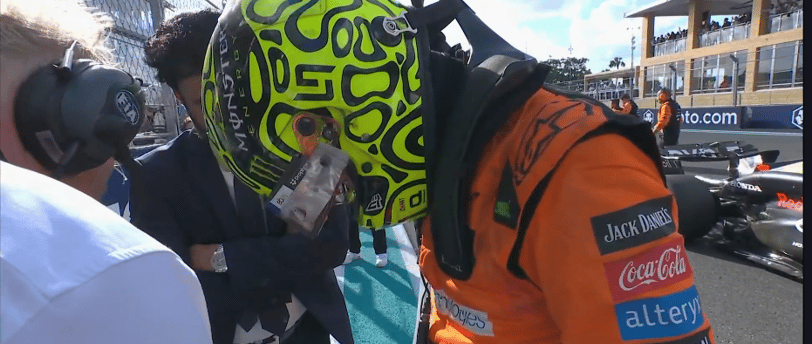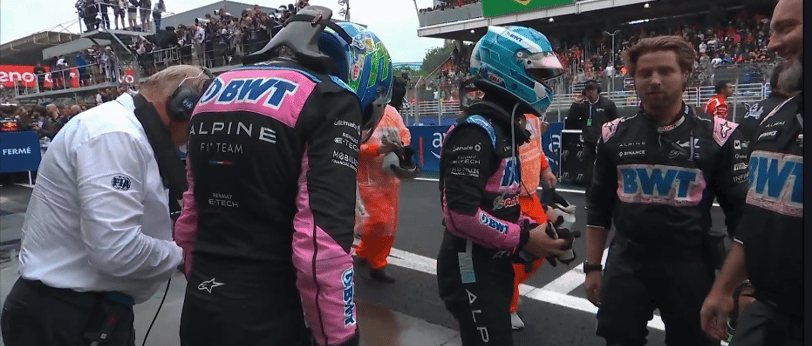Why Do F1 Drivers Get Weighed? The Science, Strategy, and Impact on Performance
Discover how weight impacts performance, hydration, and FIA regulations in Formula 1, plus why every kilo matters on the track.
Jay Vee, MD
2/2/20255 min read


Why Do F1 Drivers Get Weighed?
If you’ve ever watched an F1 race and noticed drivers heading straight to the weigh station after hopping out of the car, you might’ve wondered—why does it even matter? These guys just spent nearly two hours wrestling a machine that pulls 5G in corners, so why is the FIA so strict about stepping on a scale? Well, weight in F1 isn’t just a number—it’s a key factor that can make or break a race, influence a team’s strategy, and even determine whether a driver gets disqualified.
The Importance of Weight in Formula 1
In F1, weight is everything. A lighter car generally means better acceleration, improved tire wear, and quicker lap times. But it’s not as simple as just making everything as light as possible—FIA regulations mandate a minimum weight limit to maintain fairness and safety. That limit currently sits at 798kg (1,759 lbs) for the car, driver, and dry-weather tires—but it doesn’t include fuel, which is why teams meticulously calculate how much fuel to carry without exceeding weight restrictions.
What’s fascinating is how the driver’s weight plays into this equation. Since 2019, the FIA has set a minimum weight of 80kg (176 lbs) for drivers, including their helmet, race suit, and HANS device. If a driver weighs less than this, the team must compensate by adding ballast—essentially strategic weight that can be placed lower in the car for better handling. This rule was introduced to prevent teams from favoring smaller, lighter drivers and forcing them to cut weight in unhealthy ways.
Why Do F1 Drivers Get Weighed After a Race?
After a grueling race, every F1 driver steps on a scale for two key reasons:
Regulation Compliance – The FIA ensures that both the driver and car meet minimum weight requirements. If either falls below the limit, penalties or even disqualifications can follow.
Monitoring Weight Loss – Drivers lose between 2-4kg (4-9 lbs) during a race, mostly through sweat. In extreme heat races like the Singapore Grand Prix, weight loss can be even higher. Teams analyze this data to adjust hydration and recovery strategies for the next race.
From a medical perspective, losing that much weight in under two hours is extreme. When I see a patient who has dropped nearly 10 pounds in such a short time, they’re usually in a stupor—dehydrated to the point of requiring IV fluids, careful electrolyte monitoring, and continuous EKG monitoring for signs of arrhythmia due to the rapid fluid shifts. But in F1, this level of weight loss is just another part of the job. And it’s not just race day—drivers endure practice sessions, qualifying, sprints, and the full Grand Prix, compounding the physical and mental toll. That’s why rehydration protocols aren’t just about drinking water—they’re calculated, precise, and as vital as the race strategy itself.
The Science of Weight Loss During a Race
Ever noticed how some drivers chug down bottles of water the moment they get out of the car? That’s because they’ve just endured cockpit temperatures exceeding 50°C (122°F) while wearing a fireproof race suit. Unlike marathon runners who can sip water throughout their event, F1 drivers have limited hydration options—many rely on small onboard drink systems, but sometimes those fail. Lewis Hamilton once revealed that in one race, his drink system broke early on, leaving him completely dehydrated.
The weight loss doesn’t just come from sweating—it’s a combination of intense physical exertion, heat exposure, and stress on the body. Losing too much fluid too fast can lead to dizziness, cramping, and even a drop in blood pressure, which is why drivers work with performance nutritionists to optimize their hydration strategies.
Scrutineering & The FIA Weight Checks
Scrutineering is the FIA’s process of ensuring every car and driver complies with regulations. The post-race weigh-in is part of this, and it’s taken seriously—if a car is underweight, even by a fraction of a kilo, it can result in penalties or disqualification.
A great example of this happened to Lewis Hamilton at the 2021 Brazilian Grand Prix. His car was found to have a rear-wing DRS gap that exceeded the legal limit, and while this wasn’t a weight-related issue, it highlights how precise the FIA’s inspections are. When it comes to weight, if a driver’s car is too light after the race, they’re immediately under scrutiny.
How F1 Teams Manage Driver Weight
Managing weight in F1 is a science in itself. Teams have strict diet and fitness programs for their drivers to ensure they maintain peak performance without adding unnecessary mass. Drivers follow a carefully measured balance of strength training, cardio, and nutrition to stay lean while maintaining enough muscle to withstand the brutal forces of high-speed racing.
The introduction of the 80kg driver minimum weight rule in 2019 was a game-changer. Before that, lighter drivers were pressured to lose weight to gain an advantage, leading to unhealthy weight-cutting practices. Now, teams can balance the car using ballast, allowing every driver, regardless of body type, to compete fairly.
The Role of Ballast in F1 Weight Management
Ballast is strategically placed weight that teams use to meet the FIA’s weight limits while optimizing car handling. Since weight placement affects a car’s center of gravity, balance, and aerodynamics, teams fine-tune where ballast is added to maximize performance.
If a driver is under 80kg, teams add ballast near the cockpit to meet the minimum weight.
If a car is under 798kg, teams place ballast strategically to improve handling.
FIA regulations require all ballast to be secured to the survival cell (the monocoque) for safety.
Ballast might sound like a small detail, but it can make a massive difference in how a car behaves on track. I’m reminded of their use when I see the little weights on my car’s tires which are also used for balancing.
What Happens If a Driver or Car Is Underweight?
The consequences for failing to meet weight regulations are strict. If a car or driver is found under the legal limit:
Penalties or disqualification – FIA rules state that non-compliance can lead to a race disqualification.
Potential team investigations – If a team is repeatedly close to the weight limit, it may raise suspicion of rule-bending tactics.
The Future of Weight Regulations in F1
With F1 cars getting heavier due to increased safety features and hybrid power units, weight regulations remain a hot topic. As new car designs are introduced, balancing weight while maintaining safety will continue to be a key challenge. FIA officials and teams are constantly working to find solutions that keep racing fair, competitive, and safe.
TL;DR:
Weight in F1 isn’t just about compliance—it’s about performance, safety, and race strategy. From hydration losses to ballast placement, every detail matters. The FIA’s strict weighing protocols ensure fair play and prevent teams from gaining an unfair edge.
So next time you see a driver stepping on the scale after a race, you’ll know it’s not just a routine check—it’s a critical part of F1’s precision-driven world, where every kilo counts.






Lando Norris getting weighed at the 2024 United States Miami Grand Prix (Source: f1tv)
Esteban ocon getting weighed at 2024 Brazilian grand prix (source: f1tv)
Charles leclerc hydrating after the 2024 Abu DHabi Grand Prix (Source: f1tv)
Lewis Hamilton visibly exhausted after 2024 Abu Dhabi Grand Prix (Source: f1tv)
SOCIALS
Follow us for more.
Subscribe to the newsletter
© 2024. All rights reserved.